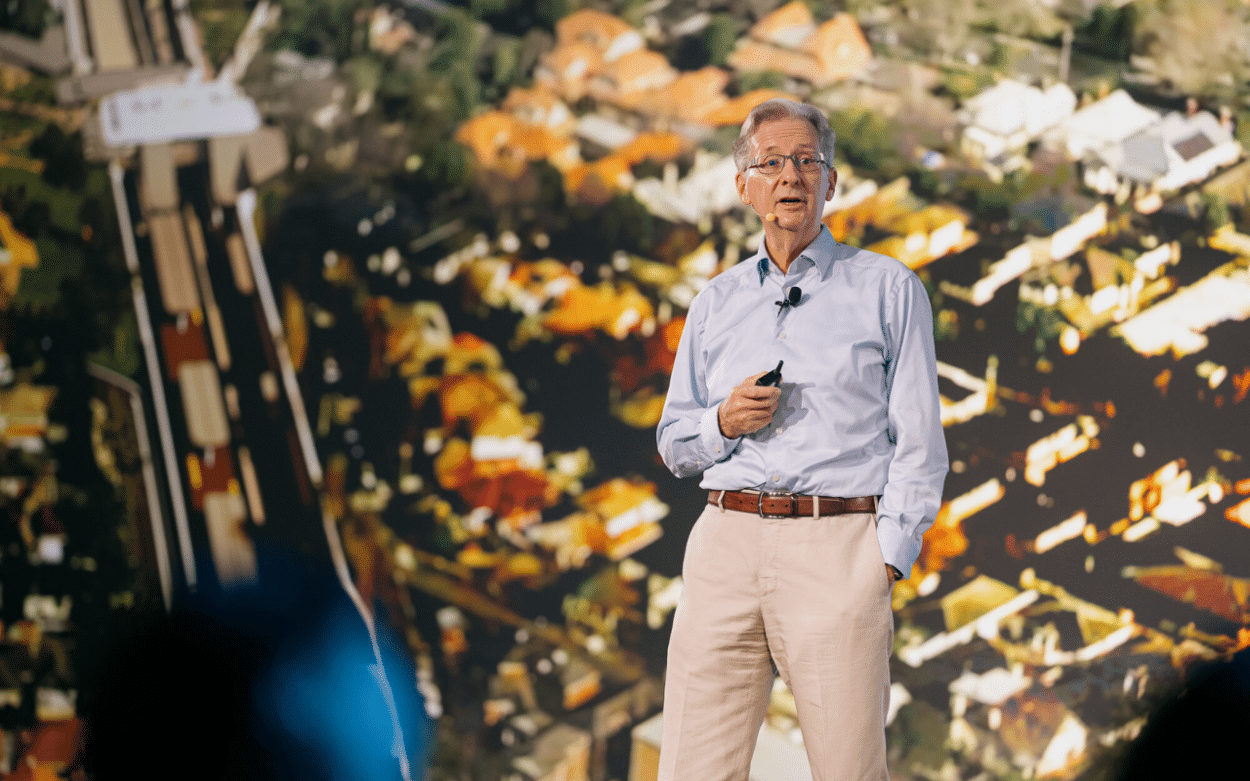During the Year in Infrastructure, Bentley Systems‘ annual conference, CEO Greg Bentley unveiled the company’s groundbreaking concept set to redefine the future of infrastructure: Infrastructure Intelligence. This innovation provides a chance to bridge the engineering resource capacity gap, stimulate innovation, and lay the foundation for a more sustainable future.
“2023 is truly a groundbreaking year for Infrastructure Intelligence,” stated Greg Bentley, the CEO of infrastructure software provider Bentley Systems, during his opening keynote at the Year in Infrastructure Conference in Singapore, which we were invited to attend this week.
Infrastructure development has undeniably emerged as a vital catalyst for economic growth. According to Kaushik Chakraborty, Vice President for the Asia Pacific region at Bentley Systems, numerous organizations in the Asia Pacific region, for instance, are making substantial investments in increasingly complex and expansive projects.
“For example, India will allocate more funds to infrastructure development in five years than it did in the previous 15 years. In Singapore, a multitude of projects, including rail expansions, extending up to the year 2050, have already been outlined. Heading to Australia, we observe significant investments in Victoria and New South Wales, aimed at enhancing transportation and responding to the trend of cities expanding, along with the development of new communities and suburbs around Melbourne and Sydney. And with the 2032 Olympics scheduled for Brisbane, the entire Southeast Queensland region is poised to evolve into a mega Olympic site, with three towns at its core. Consequently, there is a substantial level of interest in these developments.”
But at the same time, a major challenge emerges: the engineering resource capacity gap.
Infrastructure Intelligence: Addressing the Engineering Resource Capacity Gap
According to the American Council of Engineering Companies (ACEC), for every ten infrastructure engineering positions, there is one unfilled vacancy. Nicolas Cummins, Chief Operating Officer of the company warns:
“There’s simply not enough infrastructure engineers. And the skills that are required are changing as well.”
This deficit poses a serious challenge to the industry’s ability to meet growing demands. To bridge this capacity gap, digital transformation emerges as the most viable solution.
For Greg Bentley,
“going digital is more important than ever.”
So far, during previous editions of the Year in Infrastructure, Bentley discussed the transformation of infrastructure organizations into data-centric entities, harnessing digital trade technology to unlock data from files, derive insights from that data, and extend the utilization of that data from one aspect of the infrastructure to the next. But for Cummins,
“This year, we’re talking about the next step. Once you have that data, the natural next step is to develop infrastructure intelligence.”
Infrastructure intelligence could save a lot of time for engineers and therefore help close the capacity gap.
So, what is infrastructure intelligence concretely? For Cummins,
“It is the capability to leverage data, whether it is entering data or operational data or enterprise data to improve project delivery and asset performance.”
The objective is to maximize the compounded value of accumulating data in the infrastructure and engineering domains, encompassing Engineering Technology (ET), Information Technology (IT), and Operational Technology (OT). By leveraging the richness of the data, it will then be possible to empower engineers to be more productive in their work, to reuse their knowledge, and to unlock different forms of automation which are crucial to close the gap capacity.
Infrastructure Intelligence: Accelerating Energy Transition
Infrastructure intelligence could also, according to Bentley, accelerate the energy transition and lead to a more resilient, sustainable, and intelligent future.
Mark Biaggi, Senior director of Energy Industry solutions at Bentley explained:
“Behind every infrastructure asset and behind every energy project is data waiting to be unlocked, understood, and used. With data as the foundation and digital capabilities as the building box, the opportunity for infrastructure intelligence is created”.
This transformative shift underscores the evolving nature of infrastructure and energy projects, driven by the seamless fusion of data and digital innovation,
Bentley has been delivering engineering software to support energy projects including plant design, structural analysis, and pipe stress analysis. Now by leveraging data from various sources, including subsurface data, the industry can work toward more sustainable solutions. This explains why two years ago, Bentley acquired Seequent a subsurface-focused company. The idea was to be able to incorporate subsurface data into the models.
For Graham Grant, the CEO of Seequent, the subsurface plays a crucial role in addressing the energy transition. He explained that approximately 80% of the energy consumed globally derives from underground sources. Therefore, the need to revamp the industrial energy infrastructure on a global scale is inherently tied to the subsurface.






![Image [BUYING GUIDE] How to Choose the Right Industrial Robot?](/wp-content/uploads/sites/3/Industrial-Robot-320x213.jpg)

![Image [Buying Guide] How to Choose the Right Safety Shoes?](/wp-content/uploads/sites/3/Safety-Shoes-320x213.jpg)


![Image [Buying Guide] How to Choose the Right AMR?](/wp-content/uploads/sites/3/AMR-320x213.jpg)